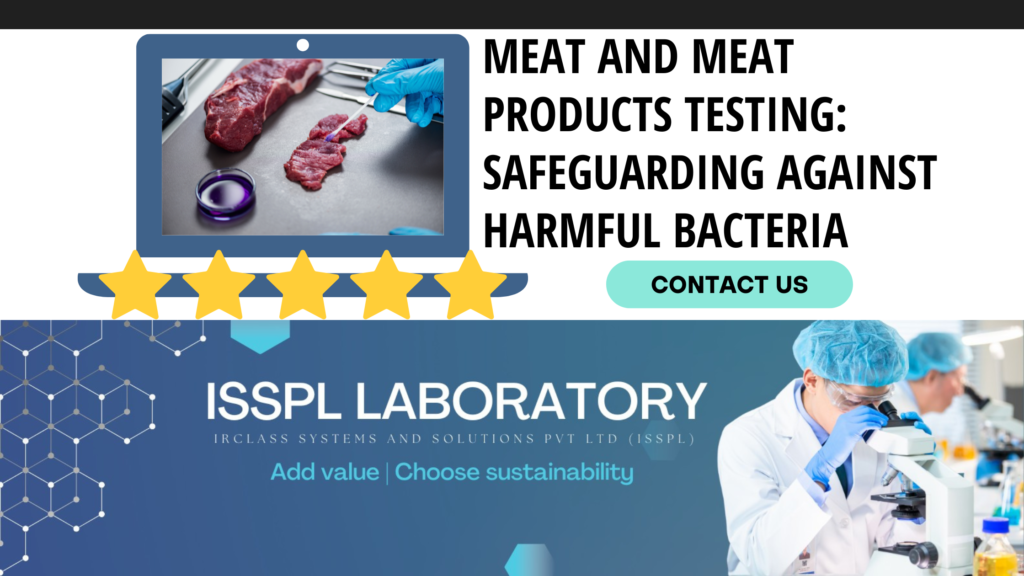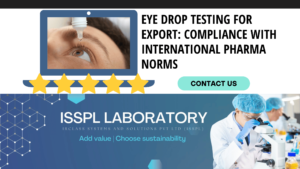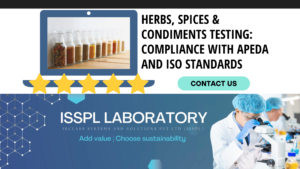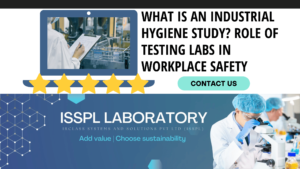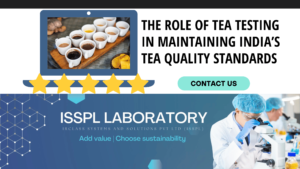An Overview by Team ISSPL - Analytical Testing Laboratory in India
ToggleAround the world, meat and meat products play a critical role in daily diets, providing important proteins and nutrients. Nevertheless, when not handled and processed correctly, meat can also be a reservoir for unhealthy microbes and pathogens.
For the safety of these products, profound testing is needed at all levels. Meat and meat product testing helps to identify contaminants, bacteria, or other harmful substances that can put the health of the consumer at risk. Given this fact, we will in today’s blog study why it is essential to test meat and how it helps in protecting us from harmful bacteria.
Importance of Meat Testing
The main purpose of the meat and meat products testing is to verify that the edible parts of cryptic fungi are safe for food consumers before eating it which serves an important role in public health. Patients can get seriously ill if they consume contaminated meat, the USDA says foodborne illnesses from ground beef include salmonella and Escherichia coli (E. do parasites like) and listeria infections. It can make you very sick or dead especially if it affects children and old people with low immune power in their body.
Preventing these harmful bacteria from entering the food supply is why it’s important to test meat products before being provided to consumers. It also works while ensuring product quality, freshness, and meeting legal safety requirements. Testing helps prevent certain harmful bacteria from spreading by detecting contamination early and therefore is critical to protect public health.
1. Ensuring Proper Hygiene During Processing
Meat testing is not only concerned with the final product but also makes sure that there is hygiene during all the stages of processing in meat. Environments where the almonds are processed can quickly become contaminated if proper sanitation procedures are not maintained. Testing ensures that all the different types of meat inside remain contamination-free.
Bacterial contamination tests during the slaughtering, processing, and packaging phases ensure all set hygiene standards are met. This may include detecting dangerous bacteria that can be swabbed on machines and surfaces.
- Identifying Harmful Bacteria
Meat Products Testing: Meat and meat products are very prone to harmful bacteria that cause several foodborne illnesses and have severe outcomes on human health. Common strains of this bacteria are Salmonella, E. coli, and Listeria (all can be found in meat). Common in raw poultry, pork, and beef, salmonella can cause symptoms such as diarrhea, fever, and abdominal cramps. Especially O157 strain E. coli and any type of Star strand cutoff
- Verifying Meat Quality and Freshness
The most important point in meat and meat product testing is that you can determine the quality and freshness of the product. Spoiled meat and improperly stored traditionally fermented meats contain high levels of a potentially pathogenic bacteria that flourishes under suboptimal conditions. Nowadays meat can also be spoiled if not kept at the proper temperature or when it is exposed to oxygen for long periods.
Preventing the Spread of Antibiotic-Resistant Bacteria
The key concern these days in the meat industry is the proliferation of antibiotic-resistant bacteria. Antibiotics are overused in livestock, creating bacteria that are drug-resistant and more difficult to treat when humans get the corresponding infections. Encouragingly, meat testing programs are an effective way to screen food animals for antibiotic-resistant bacteria — ensuring they do not make their way into the food supply.
Such testing allows food producers to verify not only the absence of antibiotic residue evidence of non-compliance with regulations and resistant bacteria but also ensure safety for human consumption. This assists in safeguarding public health and combating a challenge to global health, which includes the emergence of antibiotic-resistant infections that are resistant to one or more classes of drugs.
Protecting Consumer Health
In the final analysis, meat and meat product testing is all about safeguarding consumer health. Hundreds of thousands, and likely millions of people across the globe contract foodborne illnesses every year from contaminated meat. Testing is the initial line of defense against pathogens, making sure that the meat leaving consumers is fit to eat.
Tests also look for harmful bacteria and potential toxins, heavy metals, and chemical residues that could be health hazards. Testing identifies these contaminants in good time to prevent them from entering the food chain and posing a health problem.
Conclusion
Testing on meat and meat products is highly important to protect them from the harmful growth of bacteria and ensure that the food we eat is safe, healthy, alkaline, and palatable.
This helps to protect the well-being of consumers and prevents food-borne infections, where there is contamination with pathogens on meat by identifying contaminants, ensuring cleanliness before processing, and compliance with regulatory requirements.
With some labs specializing in testing services for just that, laboratories like ISSPL Lab provide important tests to ensure meat products are of the highest standard and safety before reaching consumers.
